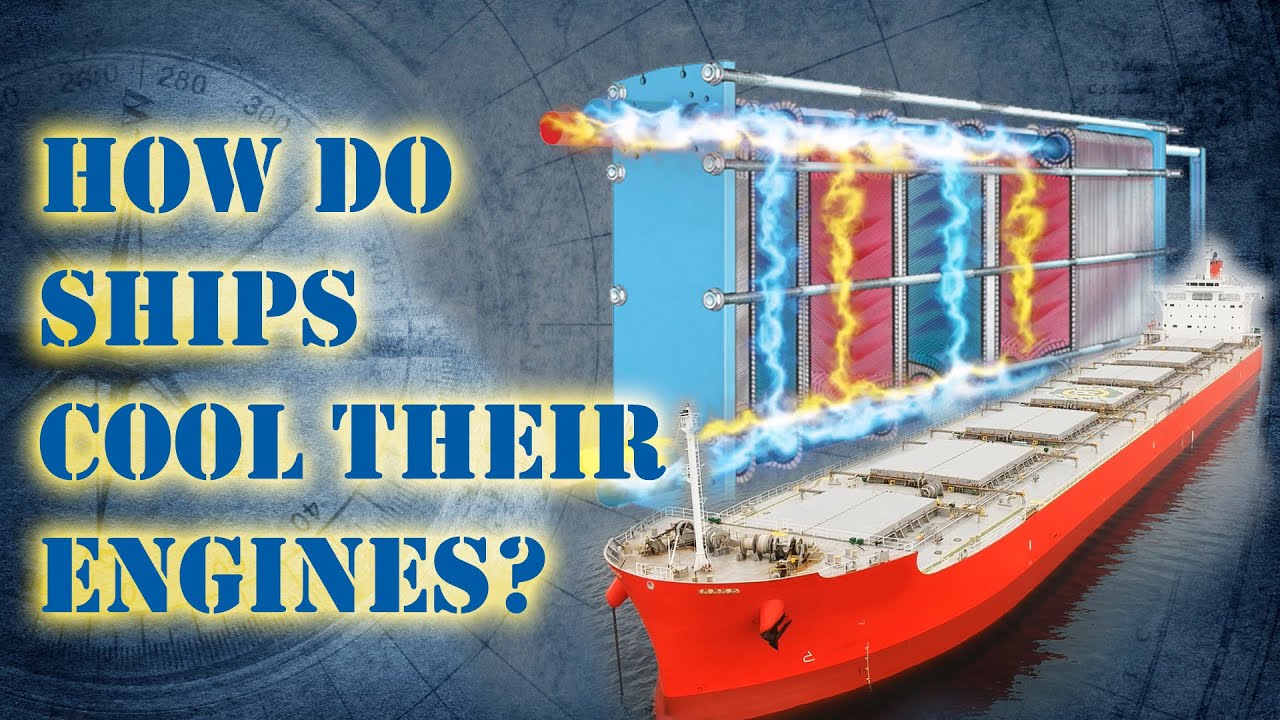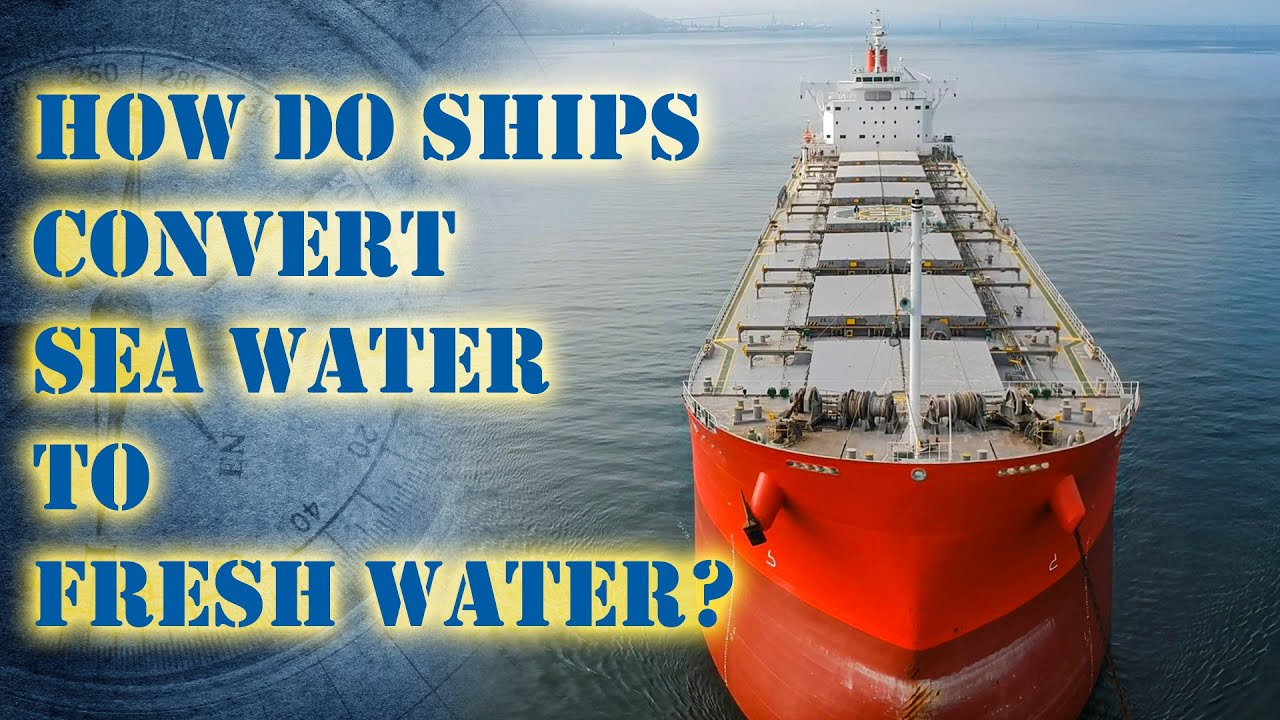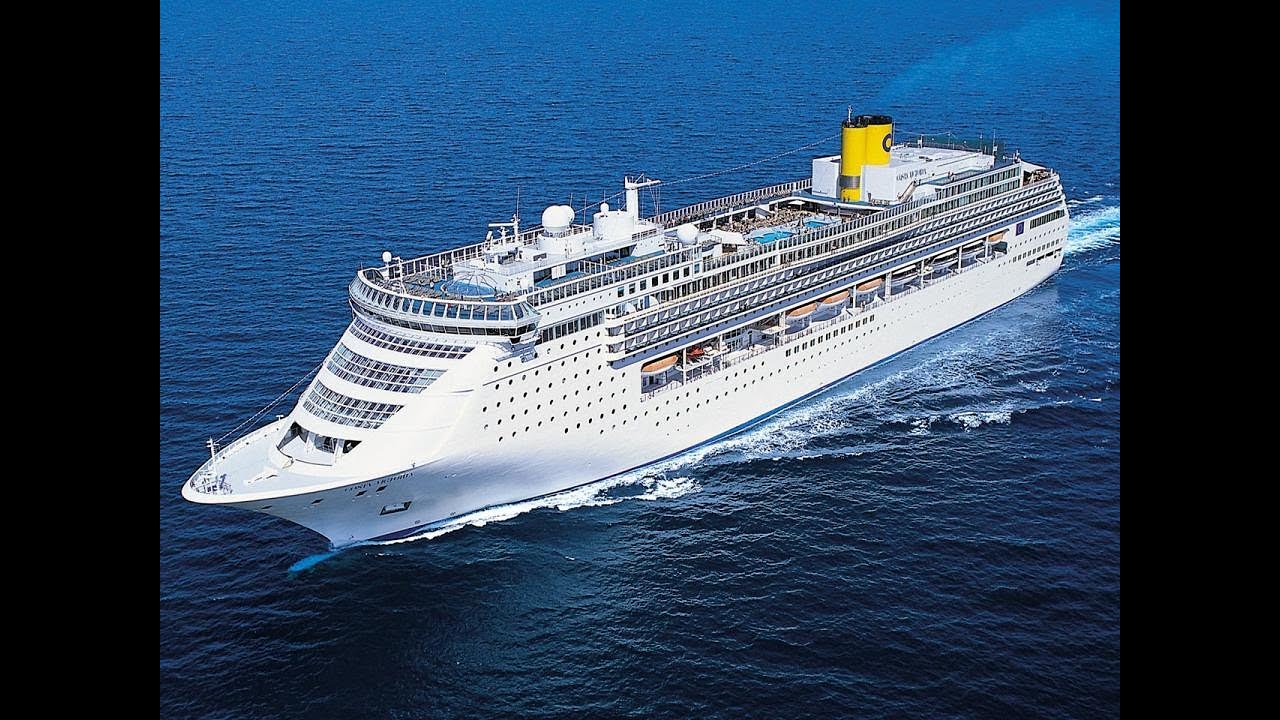Ship's Fresh Water Cooling System | Study Call Ep 003 Chief MAKOi
Summary
TLDRThis episode of 'Study Call the Chief McCoy' delves into the freshwater cooling system of ships, essential for protecting engines from corrosion and providing clean water for crew needs. It explains the high-temperature line's role in cooling engines by transferring heat to seawater and highlights the system's components, including the expansion tank, jacket cooling water pumps, and jacket water cooler. The video also touches on the use of preheaters and the potential for a low-temperature line for auxiliary machinery, setting the stage for future discussions on central cooling systems and other maritime topics.
Takeaways
- 🚢 The ship's freshwater system is essential for cooling engines and domestic use, as seawater causes corrosion and is unsuitable for consumption or sanitation.
- 🔍 The freshwater system is divided into two subsystems: freshwater cooling and domestic freshwater, with this episode focusing on the former.
- 🛠️ Ships with diesel engines have a different freshwater cooling system configuration compared to those with steam turbines.
- 🔥 The freshwater cooling system absorbs heat from the main and auxiliary engines and transfers it to the seawater system for disposal.
- 💧 The main feature of the freshwater cooling system is the high-temperature (HT) line, which is a closed-loop system.
- 🚰 Freshwater from the expansion tank is circulated by jacket cooling water pumps through the engine cylinders to maintain optimal temperatures.
- 🔄 A temperature-controlled three-way valve redirects water flow to either return to the main engine or pass through the jacket water cooler.
- ♨️ A preheater in the HT line maintains jacket water temperature when the engine operates at slow speeds, like during maneuvering.
- 🔩 Seawater should never be used directly in the engine jacket water system due to the risk of serious corrosion damage to engine parts.
- 🌡️ Some ships may have a low-temperature (LT) line for cooling smaller machinery, which uses freshwater circulated through various coolers and heat exchangers.
Q & A
What is the primary purpose of a ship's freshwater system?
-The primary purpose of a ship's freshwater system is to provide fresh water for drinking and domestic uses, and to cool the ship's engines and machinery without causing corrosion that seawater would introduce.
Why can't seawater be used for cooling engines directly?
-Seawater cannot be used directly for cooling engines because it causes corrosion in metals like iron and steel, which are commonly used in ship construction and machinery.
How does the freshwater cooling system differ from the domestic freshwater system?
-The freshwater cooling system is designed to absorb heat from the main and auxiliary engines and transfer it to the seawater system, while the domestic freshwater system is for non-industrial uses such as drinking, cooking, and sanitation.
What is the role of the jacket cooling water pumps in the freshwater cooling system?
-The jacket cooling water pumps are responsible for circulating fresh water through the engine jackets, where it absorbs heat generated by the combustion process, helping to maintain engine temperature.
What is the function of the high-temperature (HT) line in the freshwater cooling system?
-The HT line is a closed-loop system that circulates freshwater through the engine jackets to absorb heat and then redirects the heated water either back to the engine or through a cooler to dispose of the heat.
What is the purpose of the preheater in the HT line?
-The preheater in the HT line is used to maintain the jacket water temperature when the engine is running at slow speeds, ensuring efficient heat absorption and engine operation.
How does the jacket water cooler contribute to the cooling process?
-The jacket water cooler is part of the HT line and is responsible for transferring the heat absorbed from the main engine to either seawater or freshwater, depending on the ship's configuration, to be eventually released into the sea.
What is the significance of the low-temperature (LT) line in the freshwater system?
-The LT line is used for cooling smaller machinery and systems that generate heat but are not directly involved in fuel combustion. It operates as a closed loop, circulating freshwater through various coolers and heat exchangers.
How does the central cooler in the LT line function?
-The central cooler, also known as the LT water cooler, is where the freshwater that has absorbed heat from various systems is cooled by seawater, which then carries the heat away and releases it into the sea.
What are some other components that may be connected to the freshwater system?
-Other components that may be connected to the freshwater system include air compressors, lubricating oil coolers, intake air coolers for engines, and condensers for refrigeration and air conditioning systems.
Why might the design of the freshwater cooling system vary between different ships?
-The design of the freshwater cooling system may vary between ships due to differences in engine types, ship size, operational requirements, and the specific technologies employed in each vessel.
Outlines

This section is available to paid users only. Please upgrade to access this part.
Upgrade NowMindmap

This section is available to paid users only. Please upgrade to access this part.
Upgrade NowKeywords

This section is available to paid users only. Please upgrade to access this part.
Upgrade NowHighlights

This section is available to paid users only. Please upgrade to access this part.
Upgrade NowTranscripts

This section is available to paid users only. Please upgrade to access this part.
Upgrade NowBrowse More Related Video

Ship's Sea Water Cooling System | Study Call with Chief MAKOi episode 002

How Ships Convert Sea Water to Fresh Water | Chief MAKOi Study Call Ep 04

Difference between Boiler water, Boiler feedwater & Engine cooling water/Ichem Week 1

Telecurso 2000 - Qualidade Ambiental - 02 Poluição da água

Ship Hull Protection System

How Oil Water Separator Works ?
5.0 / 5 (0 votes)